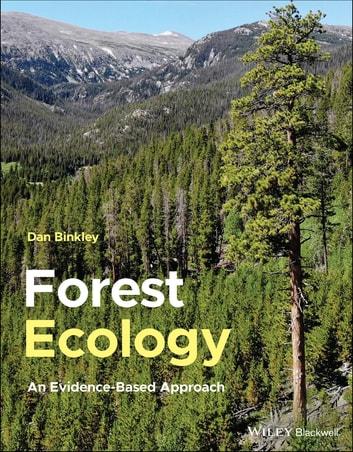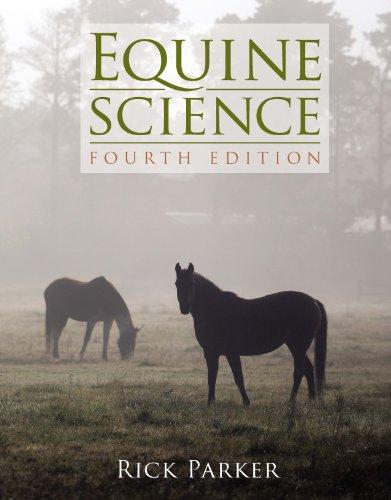Forest Ecology
Daniel M. Kashian
Wayne State University, Detroit, USA
Donald R. Zak
University of Michigan, Ann Arbor, USA
Burton V. Barnes (deceased)
University of Michigan, Ann Arbor, USA
Stephen H. Spurr (deceased)
University of Texas at Austin, Austin, USA
This fifth edition first published 2023
© 2023 John Wiley & Sons Ltd
Edition History
John Wiley & Sons Ltd. (4e, 1998); Ronald Press (3e, 1980; 2e, 1973; 1e, 1964)
All rights reserved. No part of this publication may be reproduced, stored in a retrieval system, or transmitted, in any form or by any means, electronic, mechanical, photocopying, recording, or otherwise, except as permitted by law. Advice on how to obtain permission to reuse material from this title is available at http://www.wiley.com/go/ permissions.
The right of Daniel M. Kashian, Donald R. Zak, Burton V. Barnes, and Stephen H. Spurr to be identified as the authors of this work has been asserted in accordance with law.
Registered Offices
John Wiley & Sons, Inc., 111 River Street, Hoboken, NJ 07030, USA
John Wiley & Sons Ltd., The Atrium, Southern Gate, Chichester, West Sussex, PO19 8SQ, UK
Editorial Office
9600 Garsington Road, Oxford, OX4 2DQ, UK
For details of our global editorial offices, customer services, and more information about Wiley products, visit us at www.wiley.com.
Wiley also publishes its books in a variety of electronic formats and by print-on-demand. Some content that appears in standard print versions of this book may not be available in other formats.
Limit of Liability/Disclaimer of Warranty
While the publisher and authors have used their best efforts in preparing this work, they make no representations or warranties with respect to the accuracy or completeness of the contents of this work and specifically disclaim all warranties, including without limitation any implied warranties of merchantability or fitness for a particular purpose. No warranty may be created or extended by sales representatives, written sales materials, or promotional statements for this work. The fact that an organization, website, or product is referred to in this work as a citation and/or potential source of further information does not mean that the publisher and authors endorse the information or services the organization, website, or product may provide or recommendations it may make. This work is sold with the understanding that the publisher is not engaged in rendering professional services. The advice and strategies contained herein may not be suitable for your situation. You should consult with a specialist where appropriate. Further, readers should be aware that websites listed in this work may have changed or disappeared between when this work was written and when it is read. Neither the publisher nor authors shall be liable for any loss of profit or any other commercial damages, including but not limited to special, incidental, consequential, or other damages.
Library of Congress Cataloging-in-Publication Data
Names: Kashian, Daniel M., author. | Zak, Donald R., author. | Barnes, Burton Verne, 1930-2014, author. | Spurr, Stephen H., 1918-1990, author. Title: Forest ecology / Daniel M. Kashian, Wayne State University, Detroit, USA, Donald R. Zak, University of Michigan, Ann Arbor, USA, Burton V. Barnes (deceased), University of Michigan, Ann Arbor, USA, Stephen H. Spurr (deceased), University of Texas at Austin, Austin, USA. Description: Fifth edition. | Hoboken, NJ : Wiley, 2022. | Precedey by: Forest ecology / Burton V. Barnes ... [et al.]. 4th ed. c1998. | Includes bibliographical references and index.
Identifiers: LCCN 2022037810 (print) | LCCN 2022037811 (ebook) | ISBN 9781119476085 (paperback) | ISBN 9781119476054 (adobe pdf) | ISBN 9781119476146 (epub)
Subjects: LCSH: Forest ecology. Classification: LCC QK938.F6 F635 2022 (print) | LCC QK938.F6 (ebook) | DDC 577.3–dc23/eng/20220831
LC record available at https://lccn.loc.gov/2022037810
LC ebook record available at https://lccn.loc.gov/2022037811
Cover Design: Wiley
Cover Image: © U.S. Forest Service Photo
Set in 9.5/12pt STIXTwoText by Straive, Pondicherry, India
PART 2 The Forest Tree
3 Forest Tree Variation 35
Components of Phenotypic Variation, 35
Plasticity of the Phenotype, 36
Sources of Variation, 37
The Evolutionary Sequence, 38
Sexual and Asexual Systems, 39
Genetic Diversity of Woody Species, 39
Genecology, 40
Patterns of Genecological Differentiation, 41
Genecological Categories, 42
Factors Eliciting Genecological Differentiation, 42
Growth Cessation, 43
Growth Resumption, 46
Examples of Genecological Differentiation, 46
Eastern North American Species, 47
Scots Pine, 49
Wide-Ranging Western North American Conifers, 50
Ponderosa pine, 50
Douglas-fir, 52
Local Genecological Differentiation, 55
Factors Affecting Differentiation: Gene Flow and Selection Pressure, 56
Ecological Considerations at the Species Level, 57 Niche, 60
Hybridization, 60
Polyploidy, 63
The Fitness–Flexibility Compromise, 66 Epigenetics, 66
Suggested Readings, 67
4 Regeneration Ecology 69
Regeneration, 69
Sexual Reproduction, 71
Maturation and the Ability to Flower, 72
Increasing Seed Production, 73
Reproductive Cycles, 74
Pollination, 75
Periodicity of Seed Crops, 76
Effects of Reproduction on Vegetative Growth, 78
Dispersal, 80
Seed Bank, Dormancy, and Germination, 82
Establishment Following Sexual Reproduction, 83
Post-Establishment Development, 90
Vegetative Reproduction, 90
Suggested Readings, 94
5 Tree Structure and Growth 95
Tree Form, 95
Architectural Models, 97
Short and Long Shoots, 99 Patterns of Intermittent Growth, 100 Sylleptic and Proleptic Shoots, 102 Roots, 102
Kinds, Forms, and Occurrence, 103
Fine Root Relations, 105
Horizontal and Vertical Root Development, 107
Periodicity of Primary Root Growth, 108
Root Grafting, 108
Specialized Roots and Buttresses, 110 Stems, 110
Xylem Cells and Growth Rings, 111
Periodicity and Control of Secondary Growth, 112 Control of Earlywood and Latewood Formation, 114
Winter Freezing and Water Transport, 115 Water Deficits and Tree Growth, 116
Suggested Readings, 118
PART 3 The Physical Environment
Forest Environment, 119 Site Factors, 120
Organization of Site Factors, 120
Interrelationships Among Site Factors, 121 Importance of Site in Forest Ecology, 122
Position on slope, 172
Aspect, 172
Slope inclination, 173
Parent Material in Relation to Landform, 173 Position of Landform in the Landscape, 174
Multiple Roles of Physiography, 174
Physiographic Diversity, Landscape Ecosystems, and Vegetation, 176
Mountainous Physiography, 176
Mountainous Terrain of California and the Pacific Northwest, 177 Physiography and Forests of the Central Appalachians, 180 Flatlands, 183
The Great Plains, 184
Pine Savannas of the Western Great Lakes Region, 185 Till Plains of the Midwest, 185
Southeastern and Southern Coastal Plain, 186 Floodplains, 186
Physiography and Firebreaks, 190
Microlandforms and Microtopography, 191
Tree Uprooting and Pit-and-Mound Microtopography, 191
Microtopography and Regeneration in Hardwood Swamps, 193
Suggested Readings, 194
9 Soil
Parent Material, 195
Soil Formation, 197
Soil Profile Development, 197
Physical Properties of Soil, 200
Soil Texture, 200
Soil Structure, 201
Soil Color, 202
Soil Water, 202
Physical Properties of Water, 203
Soil Water Potential, 204
Chemical Properties of Soil, 206
Clay Mineralogy, 207
Cation Exchange and the Supply of Nutrients, 209
Soil Acidity, 210
Soil Organic Matter, 212
Soil Classification, 213
Landform, Soil, and Forest Vegetation: Landscape Relationships, 215
Suggested Readings, 217
195
10 Fire
Fire and the Forest Tree, 220
Causes, 220
Fire Regime, 220
Fire Types, Frequency, and Severity, 221
Fire Adaptations and Key Characteristics, 224
Strategies of Species Persistence, 227
Closed- Cone Pines, 228
Fire and the Forest Site, 230
Indirect Effects, 230
Direct Effects, 232
Organic Matter and Erosion, 234
Beneficial Effects of Fire, 236
Suggested Readings, 236
11 Site Quality and Ecosystem Evaluation
and Classification
Direct Measurement of Forest Productivity, 238
Tree Height as a Measure of Site, 239
Site-Index Curves, 240
Comparisons Between Species, 243
Advantages and Limitations, 243
Vegetation as an Indicator of Site Quality, 244
Species Groups of Ground Cover, 245
Indicator Plants of Coastal British Columbia, 246
Ecological Species Groups, 246
Plant Associations and Habitat Types in the Western United States, 247
Operational Site Classification Based on Vegetation, 247
Applications and Limitations of Vegetation, 250
Environmental Factors as a Measure of Site, 251
Climatic Factors, 251
Physiographic Land Classification, 252
Physiographic and Soil Factors: Soil-Site Studies, 252
Soil Surveys, 256
Multiple-Factor Methods of Site and Ecosystem Classification, 256
Ecosystem Classification and Mapping in Baden-Württemberg, 257
Applications of Multi-Factor Methods in the United States and Canada, 258
Ecosystem Classification and Mapping in Michigan, 258
Ecosystem Classification in the Southeastern United States, 261
Phytosociology in Europe, 298
Continuum Concept, 298
Community as a Landscape Ecosystem Property, 299 Examples of Spatial Variation in Forest Communities, 300 Discrete Forest Communities, 300
Coastal California: Giant and Pygmy Forests, 301
Forest–Grassland Ecotone, 302
Alpine Tree Lines, 302
Merging Forest Communities, 303
Eastern Deciduous Forest—Southern Appalachians, 303
New England, 304
Competition and Niche Differentiation, 305 Interactions Among Organisms, 307
Mutualisms in Forest Ecosystems, 307
Symbiotic Mutualisms—Mycorrhizae, 307 Nonsymbiotic Mutualisms, 307
Competition, 308
Forest Community Structure and Composition, 308 Vertical Structure, 310 Stand Density, 312
Competition and Overstory Composition, 313 Competition in the Understory, 314 Understory Tolerance, 315
Characteristics of Understory-Tolerant and -Intolerant Species, 316 Tolerance Ratings of Tree Species, 317
Examples of Understory Tolerance in Forest Ecosystems, 319 Nature of Understory Tolerance, 319
Environmental Factors Relating to Understory Tolerance, 322 Physiological Processes Relating to Tolerance, 323
Suggested Readings, 325
14 Diversity in Forests
Concepts of Biological and Ecosystem Diversity, 327
The Value of Species Diversity, 328
Value of Biodiversity, 329
Common Threats to Diversity, 331
Measuring Diversity, 331
Levels of Diversity, 331
Measurement, 333
Inventory Diversity: Alpha Diversity, 333 Differentiation or Beta Diversity, 335
327
Diversity of Landscape Ecosystems, 336 Examples of Diversity, 337
Ground- Cover Species Diversity in Northern Lower Michigan, 337
Ecosystem Groups, 337
Ecosystem Types, 340
Ecosystem Diversity, 342
Causes of Species Diversity, 343
Diversity at Continental and Subcontinental Scales, 343 Paleogeography and Continental Relationships, 343 Glaciation, 344
Latitude and Elevation, 344
Diversity at Local Scales, 346 Physiography and Soil, 346
Community Composition and Structure, 349
Disturbance and Succession, 349
Focal Species in Conserving Diversity, 351
Foundation Species, 352
Keystone Species, 352
Endemics and Rare and Endangered Species, 353
Diversity and the Functioning of Ecosystems, 354
Biodiversity–Productivity Relationship, 354
The Role of Biodiversity in Ecosystem Stability, 356 Forest Management and Diversity, 357
Effects of Traditional Forest Management on Diversity, 357
Preserving Diversity in Managed Forests, 358
Ecological Forestry: Incorporating Biodiversity into Forest Management, 359
Variable-Retention Harvest System, 360 Designing a Variable-Retention Harvest System, 361 How Well Does Variable Retention Conserve Biodiversity?, 361
Epilog: Conserving Ecosystem and Biological Diversity, 363
Suggested Readings, 364
PART 5 Forest Ecosystem Dynamics
15 Long-Term Forest Ecosystem and Vegetation Change 367
Change Before the Pleistocene Age, 367 Pleistocene Glaciations, 368
Ecosystem and Vegetational Change Since the Last Glacial Maximum, 370
Eastern North America, 370
Overall Migration Sequence and Patterns, 371 Ecosystem Change in the Southern Appalachians, 373
Western North America, 373
Patterns of Tree Genera and Species Migrations, 375
Migration Irregularities and Disturbance, 377
Migration From Glacial Microrefugia, 377
Independent Migration and Similarity of Communities Through Time, 379
Suggested Readings, 380
16 Disturbance
Concepts of Disturbance, 382
Defining a Disturbance, 382
Disturbance as an Ecosystem Process, 384 Sources of Disturbance, 386
Major Disturbances in Forest Ecosystems, 387 Fire, 387
Roles of Fire in Forest Ecosystems, 387 Pines in New England and the Lake States, 389 Western Pines and Trembling Aspen, 390
Southern Pines, 393
Douglas-Fir in the Pacific Northwest, 394
Giant Sequoia, 394
Fire History and Behavior, 395
Northern Lake States, 395
Boreal Forest and Taiga, 397
Northern Rocky Mountains, 398 Fire Suppression and Exclusion, 399 Wind, 400
Widespread and Local Effects, 401 Principles of Wind Damage, 401
Broadscale Disturbance by Hurricanes, 403 Gulf and Southern Atlantic Coasts, 403
New England—1938 Hurricane, 404
Wave-Regenerated Fir Species, 404
Floodwater and Ice Storms, 404
Insects and Disease, 406
Catastrophic and Local Land Movements, 407
Logging, 407
Land Clearing, 409
Disturbance Interactions, 409
381
Temperature and Leaf C Gain, 454
Water and Leaf C Gain, 455
Soil Nitrogen Availability and Leaf C Gain, 456
Construction and Maintenance Respiration, 456
Allocation to Structure, Storage, and Defense, 459
Light and C Allocation, 461
Soil Nitrogen Availability and C Allocation, 461
Carbon Balance of Ecosystems, 465
Biomass and Productivity of Forest Ecosystems, 466
Measurement of Biomass and Productivity, 469
Climate and Productivity, 473
Soil Properties, Forest Biomass, and ANPP, 475
Biomass Accumulation During Ecosystem Development, 477
Soil N Availability and Belowground Net Primary Productivity, 482
Suggested Readings, 485
19 Nutrient Cycling
Nutrient Additions to Forest Ecosystems, 488
Mineral Weathering, 488
Atmospheric Deposition, 490
Biological Fixation of Nitrogen, 493
Nutrient Cycling within Forest Ecosystems, 497
Nutrient Transport to Roots, 497
Nutrient Uptake and Assimilation by Roots, 498
Root Architecture, Mycorrhizae, and Nutrient Acquisition, 501
Root Architecture, 501
Mycorrhizae, 502
Plant Litter and the Return of Nutrients to Forest Floor and Soil, 504
Leaf and Root Litter Production, 505
Nutrient Retranslocation, 507
Nutrients in the Forest Floor, 509
Organic Matter Decomposition and Nutrient Mineralization, 512
Biochemical Constituents of Plant Litter, 513
Dynamics of Decomposition, 515
Nitrogen Immobilization and Mineralization, 519
Nitrogen Availability in Forest Ecosystems, 521
Nitrification, 522
Nutrient Loss From Forest Ecosystems, 523
Nutrient Leaching from Forest Ecosystems, 524
21 Invasive Species in Forest Ecosystems
Concepts of Invasive Species, 587
Definition of Invasive Species, 587
Characteristic Traits of Invasive Plant Species, 589
Non-Plant Invasive Species in Forests, 594
Impacts of Invasive Species on Forests, 597
Impacts of Invasive Plants on Forests, 597
Competition, 598
Altered Fire Regimes, 598
Carbon and Nutrient Cycling, 599
Impacts of Invasive Insects and Pathogens on Forests, 600
Chestnut Blight, Dutch Elm Disease, and Forest Succession, 601
Impacts of Invasive Animals on Forests, 604
A Primer of Invasive Species Management in Forests, 605
Early Intervention Strategies, 607
Management Approaches for Established Invasive Species, 607
Novel Ecosystems and Invasive Species, 608
Suggested Readings, 610
22 Forest Landscape Ecology
Concepts of Landscape Ecology, 612
Forest Fragmentation and Connectivity, 615
Patches in Forest Ecology, 616
Forest Fragmentation, 617
Ecological Effects, 617
Connectivity, 620
Disturbances on Landscapes, 622
Effects of Heterogeneity on Disturbances, 622
Hurricanes in New England, 622
Landscape Pattern Effects on Disturbance Spread, 625
Effects of Disturbances on Heterogeneity, 625
Stand-Replacing Wildfires in Yellowstone National Park, 627
Historical Range of Variability, 630
Interactions of Landscape Patterns and Ecological Processes, 632
Leaf Area and Productivity, 633
Forest Carbon Dynamics, 635
Nutrient Dynamics, 636
Suggested Readings, 638
587
611
Concepts of Sustainability, 639
The Prevalence of Human Values in Forest Ecology, 639
Historical Perspective of Sustainability in Forests, 641
Ecosystem Services, 642
Toward a Definition of Sustainability, 644
Where Do We Go From Here?, 646
Epilog: Earth as a Metaphor for Life, 648
Suggested Readings, 650












